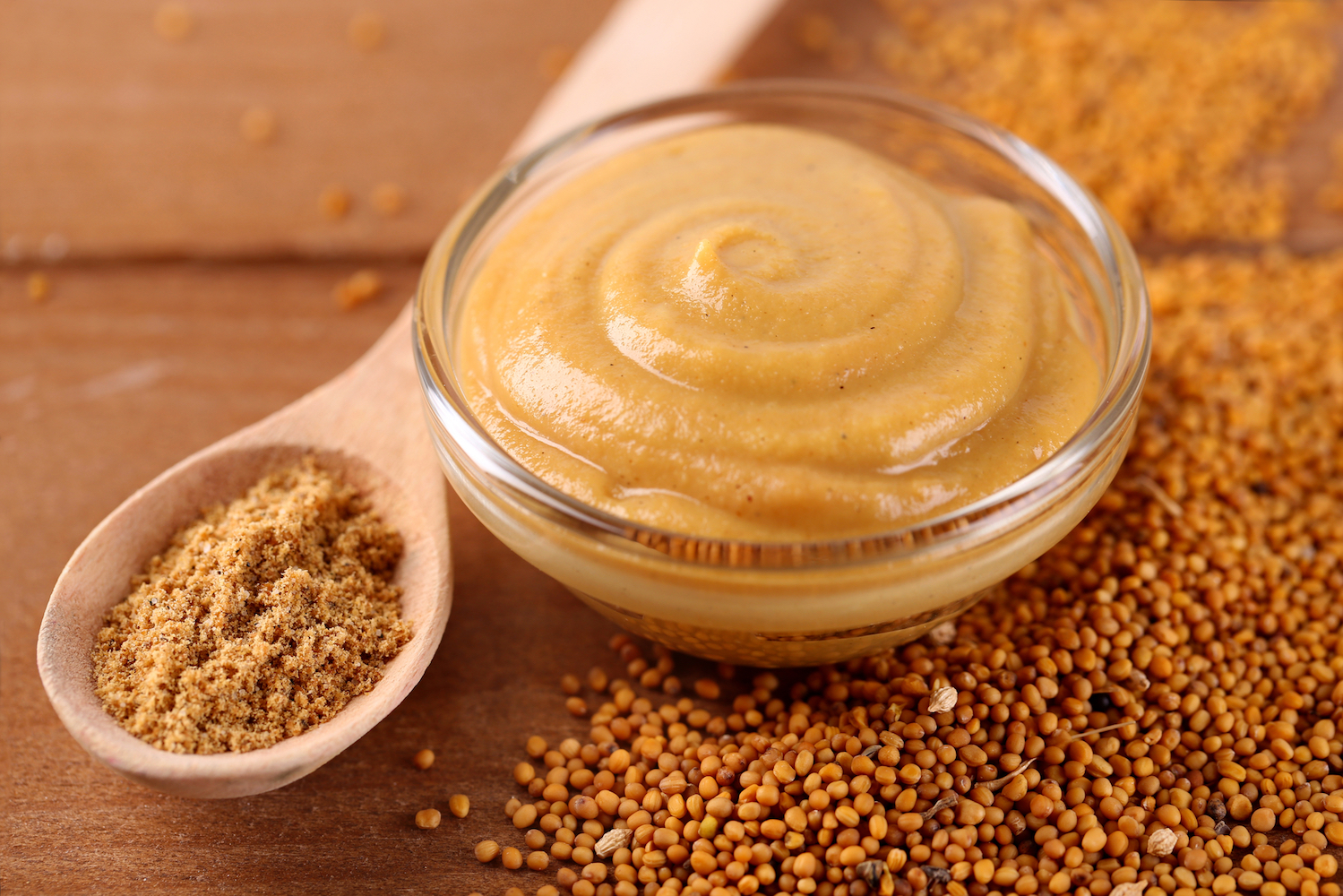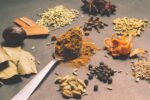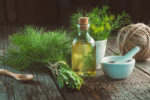
How to Make Homemade Mustards
Mustard was a useful plant in the 1800s; the leaves, seeds and flowers are all edible. Although some grocers sold condiments, especially in the latter part of the century, it was easier and cheaper to make your own. Today mustard seeds are sold whole, ground, or bruised, and most are white, brown or black.
INFORMATION BELOW FROM 1800s COOKBOOKS
MUSTARD
As all these made mustards contain spices or herbs which lose much of their aroma by exposure to the air, they should be put into jars and securely corked directly they are made. Common mustard also soon loses its piquancy if left exposed to the air. It should therefore be kept in a properly closed bottle or jar. It is best to make small quantities of common mustard frequently, almost daily, as required.
COMMON MUSTARD
Mustard is best when fresh made. Take good mustard-flour* and put it in a plate. Add to it a little salt, and mix it by degrees with boiling water to the usual consistence, rubbing it for a long time with a broad-bladed knife or a wooden spoon. It should be perfectly smooth. The less that is made at a time the better it will be. If you wish it very mild, use sugar instead of salt, and boiling milk instead of water.
* mustard flour – dry mustard, ground mustard seed, or mustard seed powder.
FRENCH MUSTARD
Mix together four ounces of the very best mustard powder, four saltspoons* of salt, a tablespoon of minced tarragon leaves, and two cloves of garlic chopped fine. Pour on by degrees sufficient vinegar (tarragon vinegar is best) to dilute it to the proper consistence. It will probably require half a pint. Mix it well, using a wooden spoon. When done, put it into a wide- mouthed bottle or into little white jars. Cork it very closely, and keep it in a dry place. It will not be fit for use in less than two days.
*salt spoon – a miniature spoon used with an open salt cellar for individual use before table salt was free-flowing.
FINE FRENCH MUSTARD
Make the mixture in a deep white-ware dish. Take a jill* of tarragon vinegar (strained from the leaves,) and mix with it an equal quantity of salad oil, stirring them well together. Pound in a mortar, two ounces of mustard seed till it becomes a fine smooth powder, and mix it thoroughly. Add to it one clove of garlic (not more) peeled, minced and pounded. If the mustard affects your eyes, put on glasses till you have finished the mixture. When done, put it up in white bottles, or gallipots*. Cork them tightly, and seal the corks. Send it to table in those bottles.
This mustard is far superior to any other, the tarragon imparting a peculiar and pleasant flavor. It is excellent to eat with any sort of roast meat, particularly beef or mutton, and an improvement to almost all plain sauces, stews, soups, &c.
* jill (or gill) – a liquid measurement. Four ounces in the U.S. and five ounces in the U.K.
* gallipot – a small pot made from glazed earthenware or metal.
TO MAKE A SPICED MUSTARD (Recipe 1)
Take a quarter of a pound of mustard-flour, pour over it three small teacups* of boiling vinegar, and keep the mixture just below boiling-heat for about forty-five minutes. Add a saltspoon of ground ginger, half a saltspoon of powdered cloves, a saltspoon of grated nutmeg, and heat for five minutes longer.
*teacup – same as a jill or gill (four ounces U.S.)
TO MAKE A SPICED MUSTARD (Recipe 2)
Take a tumbler* of vinegar, and place therein two saltspoons of salt, a saltspoon of scraped horseradish, and half a saltspoon of powdered cloves. At the end of three days, strain off the liquid and add a sufficiency of mustard-flour—about three ounces—to make a thick paste.
*tumbler – one-half pint.
TO MAKE A SPICED MUSTARD (Recipe 3)
Mix together a teaspoon each of powdered mace, ground black pepper, powdered dill seeds, and powdered cinnamon, a slightly smaller quantity of powdered cloves, a tablespoon of powdered tarragon leaves, and three pints of vinegar. Heat for an hour, strain, and then mix with about a pound of mustard-flour and a quarter of a pound of castor sugar* to make a thick paste.
* castor sugar – a fine granulated sugar, but not as fine as powdered or confectioner’s sugar.
TO MAKE FRANKFORT MUSTARD
Mix together a quarter of a pound of castor sugar, an ounce of allspice, half an ounce of powdered cloves, and a pound of ground mustard— white and brown, in equal parts. Mix into a thick paste with wine vinegar.
TO MAKE JESUITS’ MUSTARD
Thoroughly mix ten sardines, a quarter of a pound of ground brown mustard, three-quarters of a pound of ground white mustard, and two hundred capers. Make into a paste with about a quart of boiling vinegar.
TO MAKE MUSTARD AS AT DUSSELDORF
Take two earthenware pans, and place in each a quart of vinegar. In one place a quarter of an ounce of thyme leaves, and in the other place three minced onions. Let them stand for forty-eight hours. Bruise half a pound of white mustard seed and half a pound of black mustard seed, and put them in a pan with a tea-spoonful of powdered cloves, a tea-spoonful of powdered coriander, half a pound of salt, and the strained vinegar. Thoroughly mix. Add a little more vinegar if the mixture is too thick, or a little more mustard if it is too thin. Parsley, celery, or other herbs may be used instead of onions to flavour the vinegar.
TO MAKE AN AROMATIC MUSTARD POWDER
In making a mixed powder of this kind, it is absolutely essential to success that each of the articles be thoroughly dry previous to being mixed. A good result is obtained by mixing a quarter of a pound of salt, a pound of mustard, half an ounce each of dried garlic, dried thyme, dried tarragon, and mixed spices —all finely powdered. The mixture should be stored in air-tight boxes or bottles.
KEEPING MUSTARD
Dissolve three ounces of salt in a quart of boiling vinegar and pour it hot upon two ounces of scraped horseradish. Cover the jar closely and let it stand twenty-four hours. Strain it and then mix it by degrees with the best flour of mustard. Make it of the usual thickness, and beat it till quite smooth. Then put it into wide-mouthed bottles and stop it closely.
image from Deposit Photos
=====================================
Do You Like Mustard?
You may want to try making your own using dry mustard or find a variety of mustards
already made.
=====================================



3 thoughts on “How to Make Homemade Mustards”
I like the new banner! Have you ever been to Central Market and counted how many kinds of mustard they have? I have never made my own mustard before but these recipes have inspired me and the timing is good since the mustard container in our fridge is nearly empty.
Thank you. I created the banner using Canva. I love mustard and have bought a few specialty types. But these recipes inspire me, too. I’d even like to make the Jesuits’ Mustard.
Thanks for all the information, I am a mustard lover.